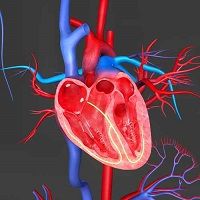Article
Promising Gene Therapy for Heart Failure
Author(s):
There have been promising results in a Phase II trial showing that gene transfer treatment of patients with heart failure and reduced ejection fraction was safe and successful in over 90% of patients.

Could curing heart failure be as simple as administering a one-time outpatient infusion of a gene therapy product?
In a study published in JAMA Cardiology, researchers presented promising results of a Phase II trial showing that gene transfer treatment of patients with heart failure and reduced ejection fraction was safe and successful in over 90% of patients.
In an interview, Jack Reich, PhD, co-founder and CEO of Renova Therapeutics in San Diego, CA, which plans to market the gene product as “RT-100,” said the patients were treated with an infusion of AC6, a protein found in cardiac muscle cells.
In most heart failure patients this protein is down-regulated in the heart, leaving the organ contracting weakly.
In the trial, an inactivated adenovirus vector encoding human adenylyl cyclase type 6 (Ad5.hAC6) was infused directly into the arteries to the heart during cardiac catheterization.
“Forty percent of the heart cells took it up like a sponge,” Reich said.
In the journal article, lead author Kirk Hammond, MD, co-founder of Renova, and colleagues concluded that the two end points of the study “showed significant between-group differences: (1) AC6 gene transfer increased LV peak −dP/dt (P < .03); and (2) AC6 gene transfer increased EF in participants with nonischemic heart failure (P = .02).”
The AC6 gene transfer “safely increased LV function beyond optimal heart failure therapy through a single administration,” the team wrote.
The treatment, if it continues to prove safe and effective, could easily be scaled up, Reich said. “This is absolutely a therapy for the masses,” he said.
“It works on anyone who has heart failure, people with big floppy hearts—some of the patients in the study had class 4 heart failure and a life expectancy of three to six months ,” but recovered after treatment, Reich said.
He predicted the therapy would also be “very inexpensive.”
To be included in the study, patients had to have a left ventricular ejection fraction of less than 40%.
The average for the 42 patients who received AC6 therapy was 30%, Reich said.
“These are people who can’t climb a flight of stairs,” he said.
There was a high success rate, with 9.5% of patients being readmitted to a hospital within a year of treatment vs. 28.6% of the placebo group.
Large trials in the US and Europe are next, he said.
The research was funded in part by the National Institutes of Health.





